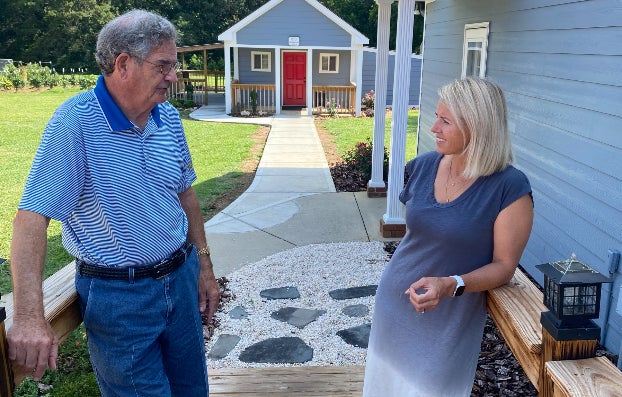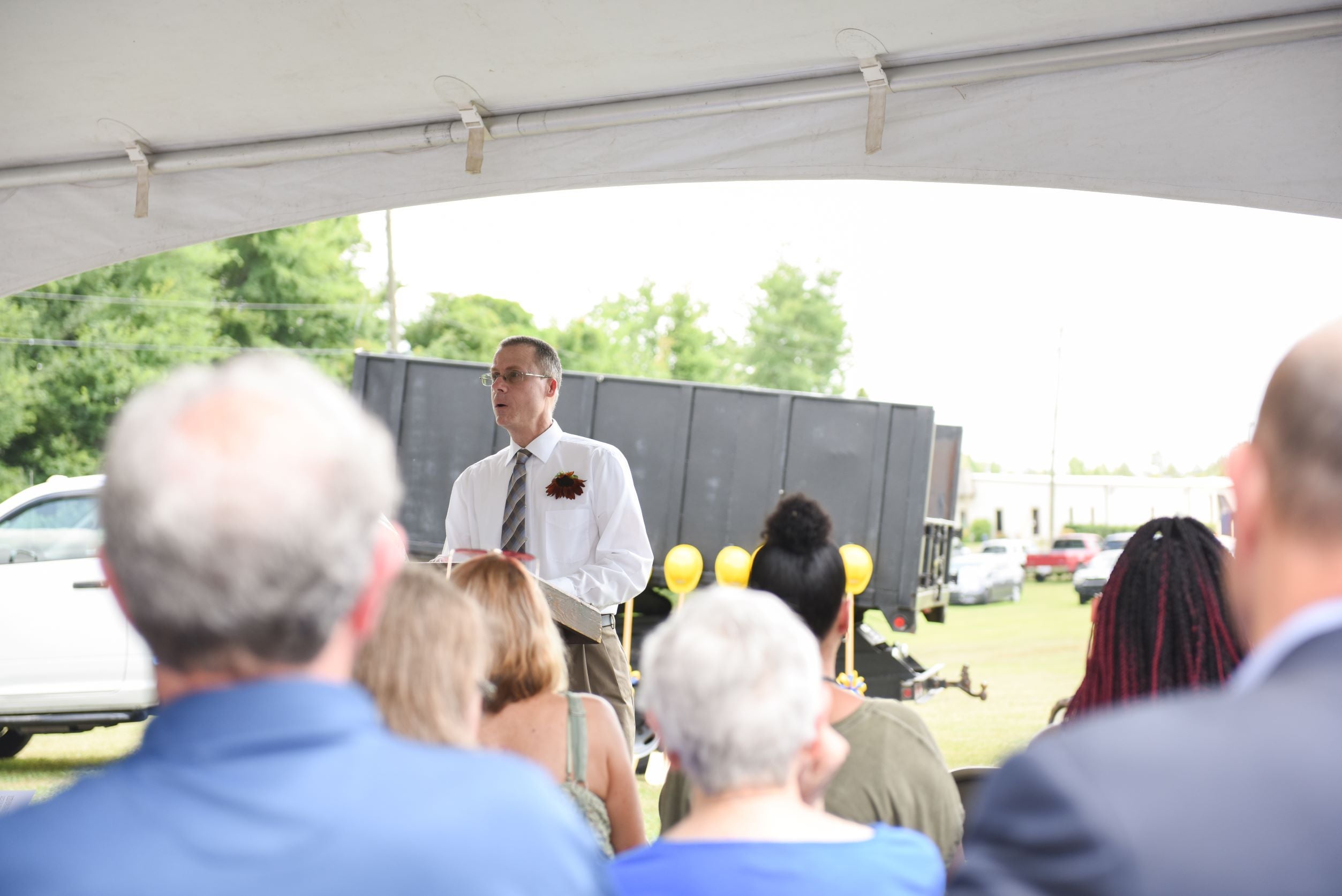Bridge To Recovery offers treatment, hope to those battling addiction
Published 10:38 am Thursday, July 21, 2022

- Bridge To Recovery founder Jim Allred talks with community outreach director Treena Norwood outside the treatment center in Monroe.
|
Getting your Trinity Audio player ready...
|
When interacting with individuals at the Bridge To Recovery’s treatment center in Monroe, there’s a strong sense of hope and optimism that comes with each conversation. Even though people from across the region come to the facility struggling with addiction, they are quickly accepted and integrated into a community of like-minded individuals all working towards recovery.
The faith-based addiction resource center has become a source of refuge for thousands of people since it first opened in 2011. Jim Allred, a retired Methodist minister who founded the organization alongside his sister Doris Skeen, has likened it to a lighthouse for those in need.
“When you walk around here among the clients, almost every one of them would say this place saved my life,” he said. “So in that sense, it definitely is a life saving station.”
BTR has a house for women currently in treatment in Stanfield, which opened in March 2014, along with a house for men beside the treatment center in Monroe. There’s also a sober living house for individuals who have finished the program in Oakboro.
BTR’s facilities are initially free to anyone who needs them. The 30-day residential program, which includes group therapy, private counseling and Bible study, costs $2,500. Other services include family interventions, day treatment and supervised sober living.
BTR is able to continue operating each year thanks to donations from individuals and organizations in the area, including many churches.

Bridge To Recovery’s treatment center is in Monroe.
“We are a Stanly County agency,” executive director Lew Davis said. “We were born in Stanly County and we serve Stanly County.”
Many of the current clients, who could not disclose their names since they are still in treatment, emphasized what a blessing BTR has been to them.
More than 360 people found their way to BTR last year, including 50 people from Stanly County, according to Davis. In 2022, 24 people from Stanly have been impacted by the organization.
“Our phones ring off the hook all the time — before the pandemic, during the pandemic and currently,” Davis said. “I get six or eight calls a day from people that I can’t take. I try to give them other phone numbers, but those places are full.”
To help accommodate more people, the organization is getting ready to construct two new dorms, each hosting 12 beds, that will be located on the front lawn of the center in Monroe. The groundbreaking took place in late June and Davis hopes to have the new facilities completed by the end of the year.

Dr. Lew Davis, executive director of Bridge to Recovery, spoke during a groundbreaking for two new dorms, which will be able to house up to 24 additional individuals. (Contributed)

A rendering of what one of the two new Bridge To Recovery dorms will look like. (Contributed)
The struggles with so many people battling addiction each year only underscores the importance of why organizations like BTR are critical, Allred said. At any time, BTR has around around 20 to 30 people in treatment.
“I think it’s a brave thing when you take that leap of faith and admit you need help,” said Treena Norwood, the organization’s community relations director.
Davis, who worked at the Stanly hospital before transitioning to BTR around 2016, said that the organization’s mission is about more than just helping people recover; it’s about making sure the opportunities are available to all who need them.
The main philosophy behind BTR, Davis said, is that alcoholism and addiction “have nothing to do with alcohol and drugs. It’s about the mental, emotional, spiritual pain that we have inside us that we are trying to run from or numb out.”
And that pain can come from a variety of places — from life-altering events like being abused as a child or losing a loved one to getting overwhelmed with daily stressors.
Anyone, regardless of age or socioeconomic status, can fall prey to addiction, which Davis defines as an “unhealthy escape from stress that becomes, over time, uncontrollable.”
“Any person goes through despondency in their lifetime, regardless of addiction,” Davis said. “They’ve had some horrible experiences or maybe they just don’t have a very good life. And then they discover something that makes life not so horrible or for a moment takes away whatever pain or sadness they have.”
In order to help them, BTR focuses on treating the mental, emotional and spiritual pain that so often drives the addiction, Davis added. And as the individuals start the process of healing, many end up feeling closer to God, whether they entered the facility a religious person or not.
“At the end of their 30 days, they have found a concept of God that has worked for them, and most of the time, they return to the God of their childhood,” Davis said.
As a symbol representing the importance of the organization’s name, Allred said once people complete their 30 days of treatment, they go through a graduation ritual of sorts by walking across a small wooden bridge outside the treatment center.
“It’s the bridge of beginning a new phase of life,” Allred said.
For more information about BTR, visit thebridgetorecovery.org or contact the group at 704-909-8025.





